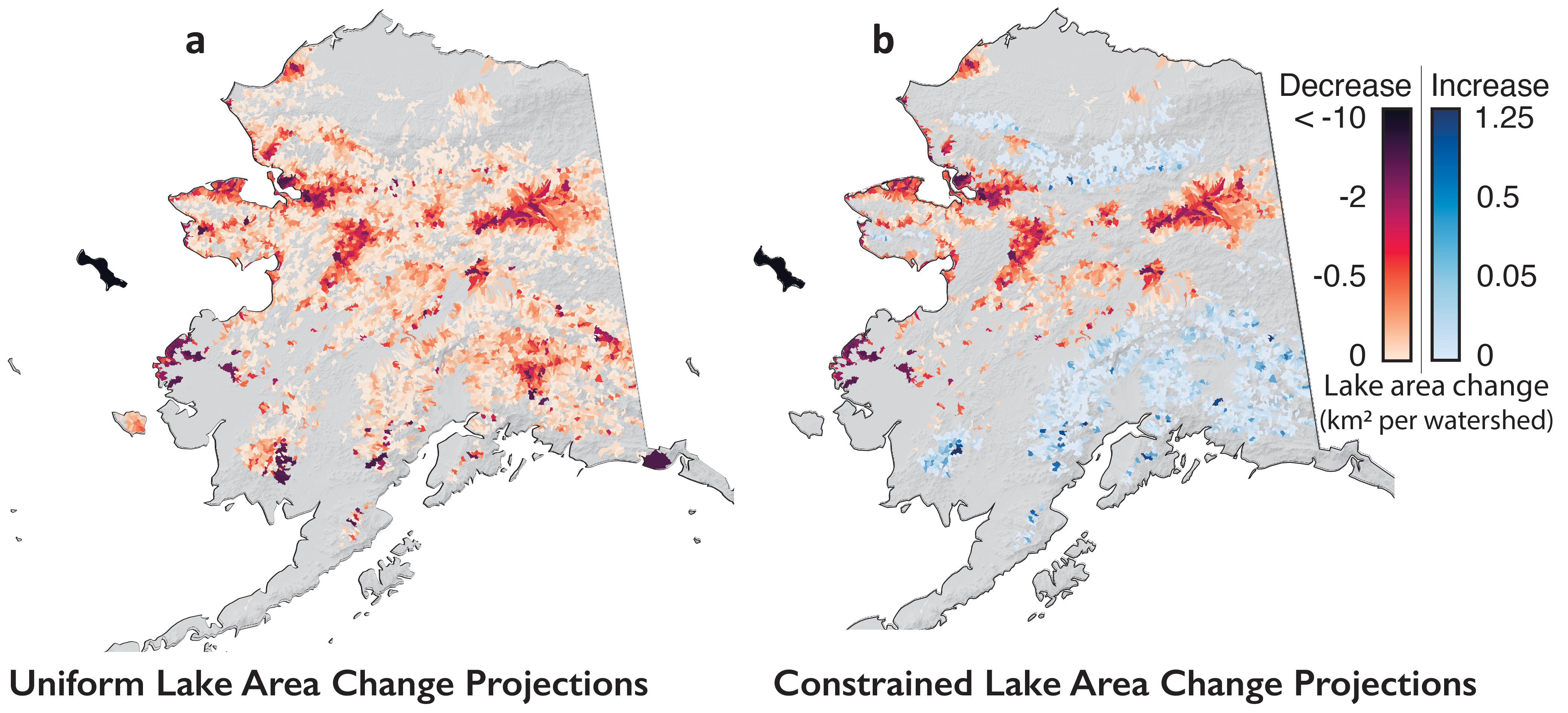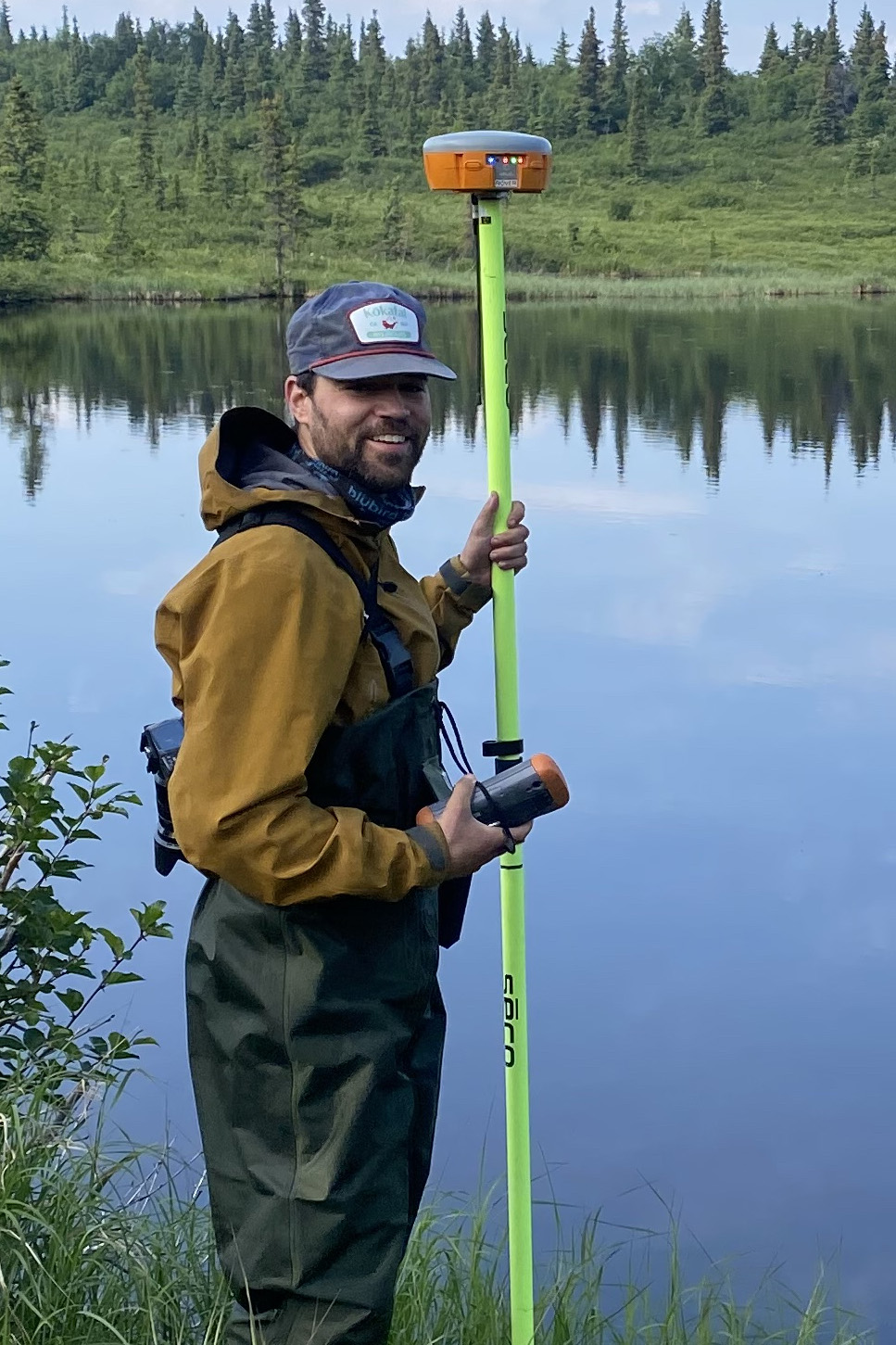Glacial history modifies permafrost controls over the distribution of lakes and ponds
Permafrost thaw causes lakes to appear, grow, shrink, and completely drain. The dynamic relationship between lakes and permafrost is one of the central storylines of Arctic environmental change, along with sea ice loss and regional greening (i.e., vegetation growth). Thawing permafrost destabilizes a carbon pool so large that it’s fate has consequences at a global scales. Scientists have observed net lake area increases AND decreases in the northern permafrost zone…a contradiction that confuses our imagination of the Arctic’s future. We need a good sense of the direction of lake area change because it fundamentally alters the region’s energy and carbon balance, as well as wildlife habitat and water resources for remote communities.
Our research published in Geophysical Research Letters suggests that differences in geology can explain why permafrost thaw can cause lake areas to increase in some regions, and decrease in others. This finding is based on the spatial patterns we observed in our Alaska Lake and Pond Occurrence Dataset. Read more here to learn about the mechanisms behind diverging lake responses to permafrost thaw, and how this changes our predictions for the future of Alaska: http://dx.doi.org/10.1029/2024GL112771
 Schematic comparing permafrost controls on lake fraction across physiographic settings. Each panel displays the oblique view of topography and ALPOD lakes from a watershed in our study that is representative of our distinct physiographic (unglaciated vs. glaciated) and permafrost (continuous vs. discontinuous) classes. The inset panel shows the number of study sites from Webb and Liljedahl (2023)33 that exhibited decreasing, increasing, or insignificant decadal-scale lake area trends within the corresponding physiographic settings. The subsurface distribution of permafrost and seasonally freezing active layer are generated to illustrate permafrost hydrology mechanisms.
Schematic comparing permafrost controls on lake fraction across physiographic settings. Each panel displays the oblique view of topography and ALPOD lakes from a watershed in our study that is representative of our distinct physiographic (unglaciated vs. glaciated) and permafrost (continuous vs. discontinuous) classes. The inset panel shows the number of study sites from Webb and Liljedahl (2023)33 that exhibited decreasing, increasing, or insignificant decadal-scale lake area trends within the corresponding physiographic settings. The subsurface distribution of permafrost and seasonally freezing active layer are generated to illustrate permafrost hydrology mechanisms.
 Estimated lake area loss based on our space-for-time substitution and projected permafrost thaw. (A) displays uniform predictions extrapolating negative correlations between lake area and permafrost extent in unglaciated-fine substrate watersheds to the entire study site (b) shows predictions constrained based on physiographic setting. Note that although the North Slope’s physiographic characteristics indicate that its lake area is sensitive to permafrost thaw, the permafrost extent is not expected to significantly decrease within this timeline56.
Estimated lake area loss based on our space-for-time substitution and projected permafrost thaw. (A) displays uniform predictions extrapolating negative correlations between lake area and permafrost extent in unglaciated-fine substrate watersheds to the entire study site (b) shows predictions constrained based on physiographic setting. Note that although the North Slope’s physiographic characteristics indicate that its lake area is sensitive to permafrost thaw, the permafrost extent is not expected to significantly decrease within this timeline56.
